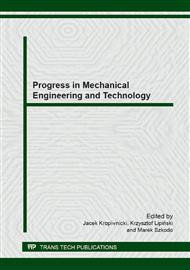[1]
Wittig, S.: Numerical flow simulation of a horizontal axis wind turbine (HAWT) rotor to investigate the potential of improving the operating performance under use of different aerodynamic modifications, cp. max Rotortechnik GmbH & Co. KG, Dresden, DEWEK Proceedings, Bremen (2008).
Google Scholar
[2]
Gollnick, B., Petsche, M., Schubert, C., Knops, M.: Numerical and experimental investigation of spoilers and stall barriers in the root area of blade, Repower Systems AG, Rendsburg, DEWEK Proceedings, Bremen (2008).
Google Scholar
[3]
Kortenstedde, F., Steckemetz, B.: Efficiency of Wind Turbines by Rotor Blade Modifications, Monograph, Developments in Mechanical Engineering, Volume 5, Gdansk University, Gdansk (2012).
Google Scholar
[4]
Patent pending, No.: DE102011110280. 2.
Google Scholar
[5]
Heinzelmann, B. S.: Strömungsbeeinflussung bei Rotorblättern von Windenergieanlagen mit Schwerpunkt auf Grenzschichtabsaugung, Dissertation, Fakultät 5, Verkehrs- und Maschinensysteme, Technische Universität Berlin, Berlin (2011).
Google Scholar
[6]
Seifert, H., et al.: Aerodynamische Optimierung von Rotorblättern, Energiekolloquium, fk-wind, Hochschule Bremerhaven, 15. 05. (2013).
Google Scholar
[7]
http: /www. cpmax. com/aerodynamische-optimierung. html (01. 07. 2013).
Google Scholar
[8]
Wendler, C.: Optimierung des Strömungselements Splitflap, für das dreidimensionale Rotorblatt einer Windenergieanlage zur Effizienzsteigerung, Bachelorthesis, Hochschule Bremen, Bremen (2012).
Google Scholar
[9]
Stanke, B.: Entwicklungsentwurf einer Strömungsbarriere zur passiven Absaugung der Querströmung am Rotorblatt der DEBRA-25, Projektarbeit, Hochschule Bremen, Bremen (2013).
Google Scholar


